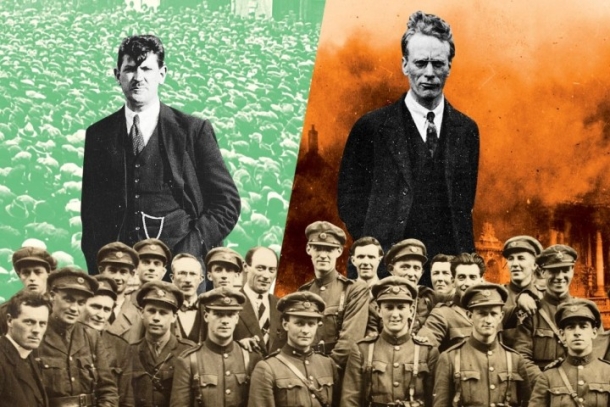This summer marks a century since the outbreak of civil war in Ireland, when fighting began between supporters of the Anglo-Irish Treaty and those demanding a sovereign Irish Republic. Today, the struggle for a Socialist United Ireland continues.
One hundred years ago, the streets of central Dublin were turned into a warzone. Hundreds were killed – the vast majority of them civilians – as British shells rained down on the Four Courts building and the surrounding area, where armed members of the Irish Republican Army had set up an occupation.
Gun battles raged in the streets, while the occupiers were slowly blasted into submission. Bodies and debris floated down the river Liffey as black clouds of smoke filled the summer sky.
The scene was reminiscent of Easter Week in 1916 – this was the intention of the occupiers. It was not an English voice commanding the artillery barrage this time, however: it was an Irish one, representing the authority of a provisional Irish government recognised by Britain.
These were the opening salvoes of Ireland’s brief but bloody civil war.
Civil war begins
Dressed in his tailored new National Army uniform, Michael Collins – the ‘Big Fella’, one of the most well-known figures of the Republican movement and chief of the IRA – ordered the attack on his former comrades-in-arms when they refused to surrender.
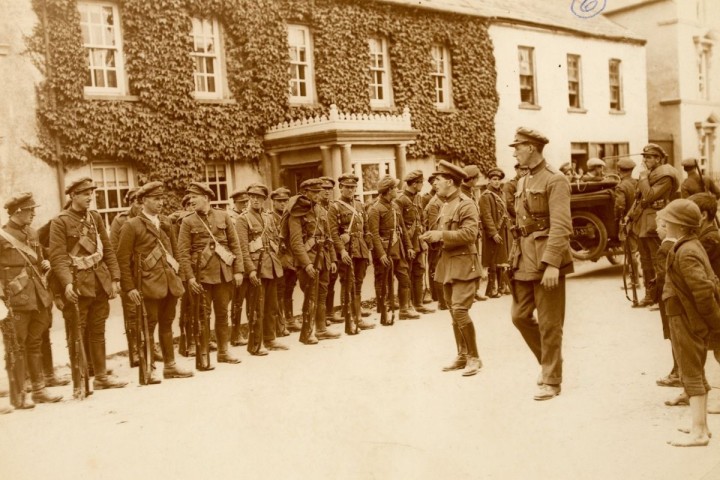 Collins had gone from being one of the most popular leaders to the most polarising / Image: techyparas
Collins had gone from being one of the most popular leaders to the most polarising / Image: techyparas
Collins had gone from being one of the most popular leaders to the most polarising, for the part he played in the Battle of the Four Courts, and in supporting the Anglo-Irish Treaty that ended the war with Britain.
The occupiers of the building had condemned the Treaty as a sell-out. Their central demand was that the IRA continue to fight for a sovereign Irish Republic, and not the partitioned ‘Free State’ within the British Empire, as outlined by the Treaty.
Cathal Brugha, IRA Chief of Staff and former Defence Minister in the rebel government, had tried to dissuade his anti-Treaty comrades from taking up arms against the Free State. Nonetheless, he joined the occupiers, hoping to prevent the massacre of Irishmen by Irishmen. But he was shot down in the street.
Months later, in August 1922, Collins was assassinated in an anti-Treaty IRA ambush while visiting his native county Cork. The Civil War would then begin in earnest: families and friends were turned against each other, torn apart by mutual accusations of treason and betrayal.
Opponents of the Treaty would be rounded up and either imprisoned or summarily executed. More people would lose their lives in the space of less than eleven months than in the two-and-a-half years of the War of Independence.
The living body of Ireland was divided in two, with a reactionary sectarian statelet in the North, and a semi-colonial conservative regime in the South. The ‘carnival of reaction’ – predicted by James Connolly should Ireland be divided – came to pass, and the revolutionary period that began in 1916 was cut short.
British imperialism weakened
By 1921, the British imperialist machine in Ireland had been brought to its knees. Waves of strikes and rural uprisings had shaken every factory and field on the island. Winston Churchill – then Secretary of State for War – had created the infamous Black and Tans to terrorise the population into submission. But this only provoked further indignation.
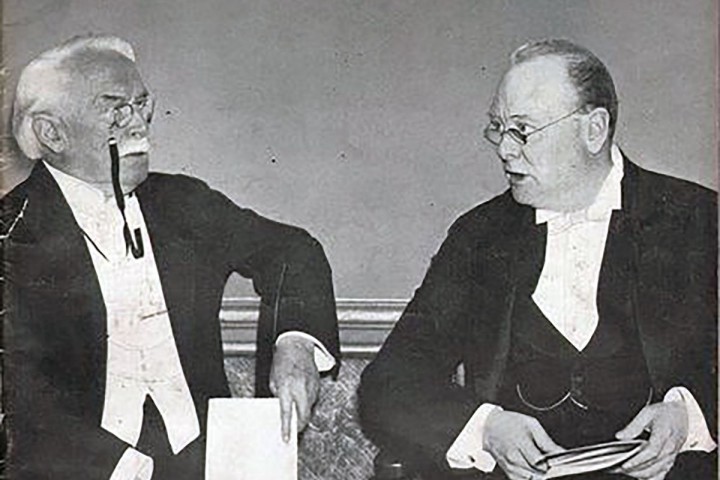 The Treaty really represented a change in tactic by the British ruling class / Image: techyparas
The Treaty really represented a change in tactic by the British ruling class / Image: techyparas
Taxes went uncollected; rents and duties went unpaid; and courts fell into disuse as the populace turned to the republican Dáil Éireann as the legitimate government, elected at the last all-Ireland general election in 1918.
English troops wanted to go home. The great slaughter of WW1 had ended, and the working class in England were questioning why their sons were still fighting and dying in Ireland when the ‘war to end all wars’ had concluded with supposed victory.
The vicious colonial gendarmerie – the Royal Irish Constabulary – had been broken by desertions under pressure from the IRA, and near-constant attacks on its rural outposts. The centre of colonial administration in Dublin Castle had itself been infiltrated by the IRA. Nowhere was safe.
Holding control over Ireland by the sword had become untenable. Even bloodthirsty tyrants like Churchill were forced to recognise this. Moreover, there were anti-colonial rebellions erupting in Egypt and India that had to take priority.
The Liberal Prime Minister David Lloyd George – regarded by Lenin as one of the most astute bourgeois statesmen of the day – thus offered negotiations and a truce to the IRA leaders.
Michael Collins – a military and espionage ‘man of action’ at heart, rather than a politician – would find himself as head of the Dáil Éireann delegation to the negotiations.
Collins was not a fool; he could tell that Lloyd George was trying to corrupt and manipulate him with promises of Ireland being an ‘equal’ partner to England in the British Empire, if only it gave up its demand for independence.
Nonetheless, having been given supreme authority by exiled Dáil President Éamon De Valera, Collins chose to accept Lloyd George’s proposals.
What the Treaty really represented was a change in tactic by the British ruling class. They could not subdue Ireland beneath the heel of a foreign hobnailed boot, and so would turn to the Irish bourgeois to do it for them.
Maintaining economic and diplomatic domination over Ireland, while contracting out the dirty work to the ‘native’ ruling class, would simply turn the country from a colony into a semi-colony.
This method of imperialist control was perfected throughout the decline and fall of the British Empire, which began with Ireland. It is a trick that has worked on many bourgeois nationalist movements, underlining the fact that only the working class can carry through these struggles to the end, on the basis of a revolutionary socialist programme.
Treaty or trickery?
The content of the Treaty caused outrage among the ranks of the IRA. Ireland would not be a Republic but a ‘free state’, with the same status as Canada or Australia within the Empire.
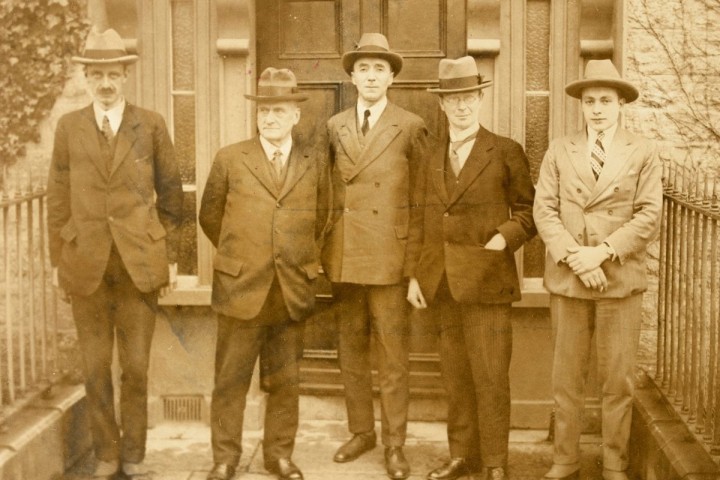 The draft Treaty immediately caused a split in the rebel government / Image: techyparas
The draft Treaty immediately caused a split in the rebel government / Image: techyparas
Six counties of Ulster would be broken off and remain part of the United Kingdom. And the 26-county Irish Free State would promise not to adopt any policies hostile to Britain’s interests. To guarantee this, Britain would maintain its navy ports along the Irish Atlantic coast, as permanent and sovereign military outposts.
Most odious of all to the Republican movement was the requirement that all Dáil members swear an Oath of Allegiance to the King of England, who would be represented by an imperial viceroy as head-of-state in Ireland.
The draft Treaty immediately caused a split in the rebel government, with the anti-Treaty side represented by De Valera and pro-Treaty side by Collins.
There was a ferocious and emotional debate in the Dáil over ratification. Tears were shed and tempers frayed as the potential outcomes became clear: either an escalated ‘terrible and immediate’ war with Britain, which Collins firmly believed the IRA would not be able to survive; or a collapse of the Dáil and civil war.
The pro-Treaty side narrowly won, provoking a walk-out of the anti-Treaty minority. Sinn Féin and the IRA would split into pro- and anti-Treaty factions. The issue would be settled by more bloodletting.
Free state or republic?
Around two-thirds of the rank and file of the IRA supported the anti-Treaty side. At the first Free State election in June 1922, however, the pro-Treaty faction of Sinn Féin and pro-Treaty Labour Party decisively won over 50% of the votes.
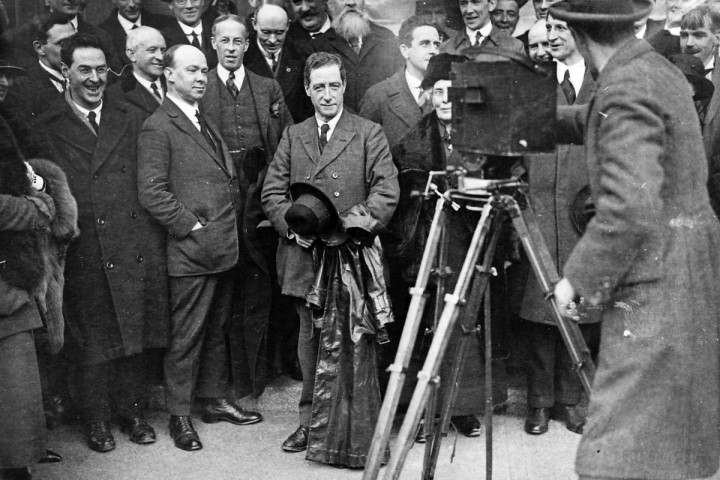 The anti-Treaty forces didn’t offer anything fundamentally different from the pro-Treaty side / Image: techyparas
The anti-Treaty forces didn’t offer anything fundamentally different from the pro-Treaty side / Image: techyparas
Those who had fought in the guerrilla war felt that they were being betrayed, and that the armed struggle must go on. The majority of the working class and poor farmers, however, were feeling exhausted by the conflict.
Collins toured the country presenting the Treaty as a temporary measure, creating the breathing space that would break the military stalemate and open the way for peaceful progress towards the Republic – ‘the freedom to achieve freedom’. In time, he also believed that the question of partition would be resolved.
The opportunist labour and trade union leaders – standing on the powerful reputation of Connolly, but heeding none of his words – maintained disinterest in the question of the Republic. They wished instead for a return to social and economic peace.
Labour Party leader Tom Johnstone and others continued the policy they had held throughout the period of revolutionary upheavals: of subordinating the working class to the right wing of the petit-bourgeois nationalists.
Though both factions of Sinn Féin had agreed to a joint pact in the election, the split was consummated after the attack on the Four Courts. De Valera and his supporters boycotted the new Dáil. And the anti-Treaty IRA ‘irregulars’ declared it their enemy, launching a campaign of attacks around the country.
De Valera also drew massive crowds, painting himself as the sole consistent defender of the Republican cause. Though many on his side in the ranks of the IRA believed they were fighting for the social as well as political transformation of Ireland, symbolised by the Republic, De Valera did not share this cause.
In reality, De Valera’s opposition to the Treaty was entirely opportunistic. He did not have the appetite for any kind of revolutionary struggle.
In 1923, he attempted to force the irregulars to surrender, causing another split. With his new Fianna Fáil party, De Valera would eventually enter the Free State Dáil in 1927 and support state repression of republicans.
De Valera was bourgeois through-and-through. Though under him, the rebel Dáil had adopted social aims in words – workers’ unemployment insurance, nationalisation, free secular education, etc. – in deeds, it ensured the property and profits of ‘patriotic’ capitalists and landlords were protected from worker occupations and land seizures.
The anti-Treaty forces didn’t offer anything fundamentally different from the pro-Treaty side. They stood only on familiar republican rhetoric and the bloody reality of continued guerrilla war. As such, they became increasingly isolated and unpopular – especially after the assassination of Michael Collins.
Partition and reaction
James Connolly had predicted that if the Irish working class did not lead the struggle for national liberation under the banner of an Irish Workers’ Republic, but left it in the hands of the bourgeois and petit-bourgeois nationalists, then genuine freedom would be sold out at the earliest opportunity.
The cost of this selling out would be the continued exploitation and oppression by the capitalist and landlord class, and the partition of the majority-Protestant North as a reactionary bulwark against the working class, North and South. Connolly warned of a ‘carnival of reaction’, and this has sadly been confirmed by history.
After partition, there was a wave of pogroms across the North. The local IRA brigades, left to their own devices by Collins, attempted to protect the Catholic minority. They also took part in tit-for-tat sectarian revenge killings – a shadow of things to come. Catholics were overwhelmingly the victims of the violence, however, and over 20,000 families fled to the South.
Collins maintained secret contact with the Northern IRA, and even tried to supply them with arms. Supposedly he planned on a future invasion of the North to end partition, though this may just be a legend.
In truth, Collins and the new Free State government were heavily pressured by the British to crush anti-Treaty forces. The assassination of General Sir Henry Wilson by IRA volunteers in London in June 1922, allegedly planned and ordered by Collins before the Treaty negotiations began, upped the pressure even more.
The occupation of the Four Courts that began in April, after a split in the IRA Executive, was viewed as a threat to the implementation of the Treaty by Lloyd George. The fact that 200 armed IRA men, some of them new volunteers, as well as many veterans, had barricaded themselves in the main judicial building of the capital city – in open defiance of the Treaty – was unacceptable to the British government.
It was Churchill who gave the Free Staters an ultimatum: either destroy the Four Courts occupation and liquidate the irregulars, or British troops will be back to finish the job. Collins attempted to defer or delay a decision, but ultimately obliged.
To the Northern IRA, Collins promised that he would try to get Lloyd George to intervene to stop the pogroms. To the Four Courts occupiers, he first attempted conciliation, hoping they would agree to put their differences aside and focus on fighting partition together.
This did not work. For one, the issue of partition had been thought of as a secondary one to the hated Oath of Allegiance by the anti-Treaty side, not realising the danger it really represented. Secondly, it is unlikely this would have gotten past Lloyd George or Churchill, who demanded settlement through blood and iron.
Repression escalates
Besides the Four Courts episode, the irregulars’ military campaign was largely confined to the West of Ireland – the traditional strongholds of the IRA flying columns from the War of Independence.
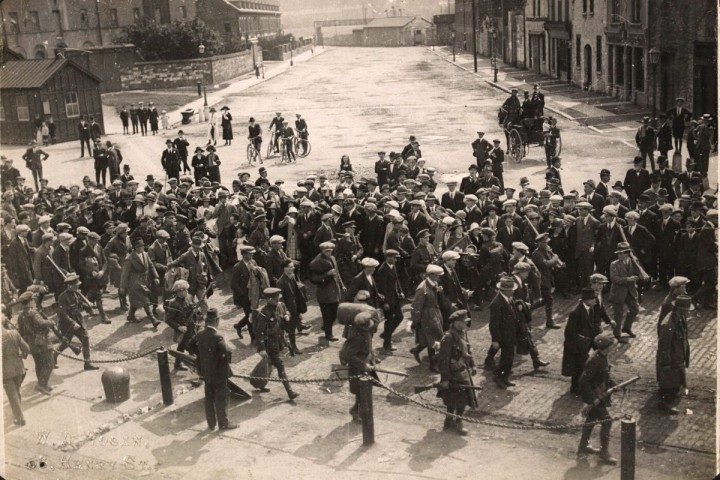 Following the death of Collins, the repression would dramatically escalate / Image: techyparas
Following the death of Collins, the repression would dramatically escalate / Image: techyparas
The Free State Army, meanwhile, quickly grew to over 50,000 troops, recruited from reactionary layers. This was larger than any force Britain had ever deployed in Ireland, but was just as well armed, with British-made artillery, machine guns, and armoured vehicles. It quickly overwhelmed the IRA in a short war of attrition. By early 1923, the anti-Treaty forces were completely shattered.
Following the death of Collins, the repression would dramatically escalate. Over 12,000 republicans were thrown in internment camps by the end of 1923. It was decreed that anyone caught possessing a gun without just cause would be summarily executed. The first to face this fate was the famous gun-runner Erskine Childers – killed for keeping a pistol gifted to him by Michael Collins himself.
The leaders of the Four Courts occupation – Liam Mellows, Rory O’Connor, Richard Barrett, and Joe McKelvey – were taken from their cells at Mountjoy Prison and shot without trial in December 1922.
Whilst occupying the Four Courts building, Mellows, who was an admirer of Connolly and the Bolsheviks, had looked out onto the quayside and observed the attitude of the workers who were attempting to avoid the trouble nearby as they travelled to and from work. “The workers weren’t with us,” he commented to fellow left-wing IRA commander, Peadar O’Donnell.
His conclusions were correct, but it was too late. From Mountjoy Jail, Mellows attempted to politically rearm the anti-Treaty movement, urging it to adopt a socialist programme and develop its links to the Communist International.
But the counter-revolution was now triumphant, and it sealed its victory with Mellows’ own blood. His death was another blow to the generation of Irish revolutionaries, and a real loss for the working class.
Legacy
The new Free State government under W T Cosgrave would launch a general assault on the Irish working class, demanding wage austerity and attacking trade unions in the midst of an economic crisis.
Coupled with the policy of harsh persecution of republicans – which continues up to this day – the Free State would restore bourgeois order in Ireland, inaugurating the reaction that followed the defeated Irish revolution.
The pro-Treaty faction of Sinn Féin under Cosgrave would evolve into the openly reactionary anti-communist Cumann na nGaedheal – forerunners of today’s Fine Gael – which included in its leadership clerical fascists like Blueshirts paramilitary founder Eoin O’Duffy. O’Duffy would go on to encourage National Army Civil War veterans to fight for Franco in Spain, and even tried to make an alliance with Hitler against the Soviet Union.
Éamon De Valera would abandon the IRA once he saw the opportunity to form a Free State government with his party, Fianna Fáil. Calling itself ‘the Republican Party’, in reality it defended the interests of the capitalist class, the Catholic Church, and the persecution of republicans who stayed loyal to the Republic declared in 1916.
Today, Fine Gael and Fianna Fáil have met their destiny and practically merged as the single party of Irish capital and the ruling class. Sinn Féin exists in a new form, created out of the bloodbath generated by partition and the sectarian ‘Orange state’ in the North – the Troubles.
The IRA would rapidly decline in size and support after getting rid of most of its arms in May 1923, which marked the end of the civil war proper. Though in the early days of the anti-Treaty movement some figures had tried to raise a socialist programme, the IRA politically degenerated and lost all connection to the most progressive elements of the working class.
In 1937, De Valera – then President – had the Irish Free State renamed to the Republic of Ireland, and many of the terms of the hated Anglo-Irish Treaty overturned. This was not the Republic for which many had fought and died, however.
A lost revolution?
The stain of partition still remains in Ireland, and all the miseries of capitalist exploitation continue unabated. Ireland is no longer strictly a colony or semi-colony of Britain in particular, but of the whole international capitalist class and their transnational corporations.
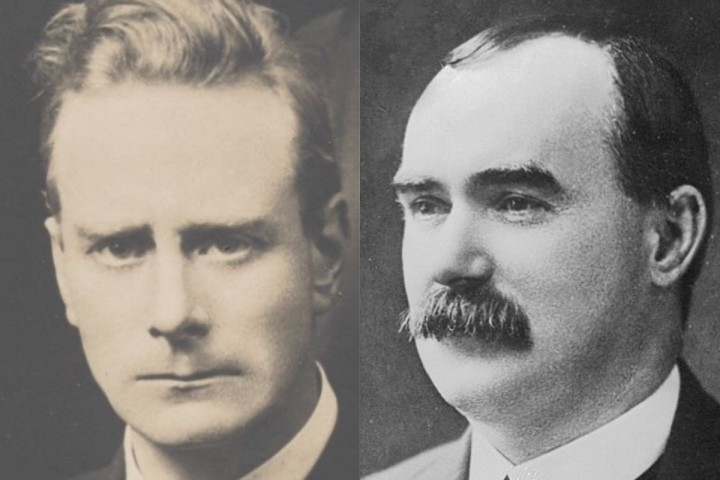 The revolution that Ireland lost was not purely nationalist, but a socialist revolution as described by James Connolly / Image: techyparas
The revolution that Ireland lost was not purely nationalist, but a socialist revolution as described by James Connolly / Image: techyparas
The revolution that Ireland lost was not a purely nationalist or republican one, but a socialist revolution as described by James Connolly.
Only with the force of the united working class – armed with a revolutionary programme, against British imperialism and its natural class allies among the Irish capitalists and landlords – can the Irish revolution succeed.
Had there been in Ireland a Marxist party of the advanced working class like that of the Bolsheviks, steeled in struggle and led by brave class fighters like Connolly and Mellows, then the rising of the workers of Russia in the East could have been met by Irish workers from the West.
The first to join them would have been the working classes of Britain, who were themselves in a state of ferment after WWI and would carry out the general strike in 1926.
Irish, British, European, and world history would have been set on a different course. This is not truly a lost revolution, however, but one that is yet to be made. The task today is to build the forces of the coming revolution and prepare for its decisive battles.

